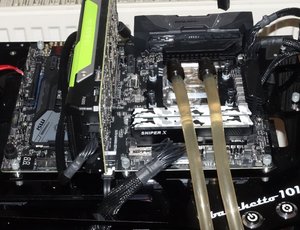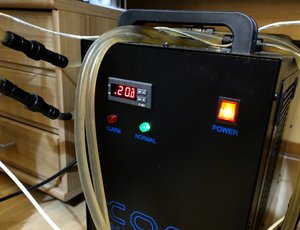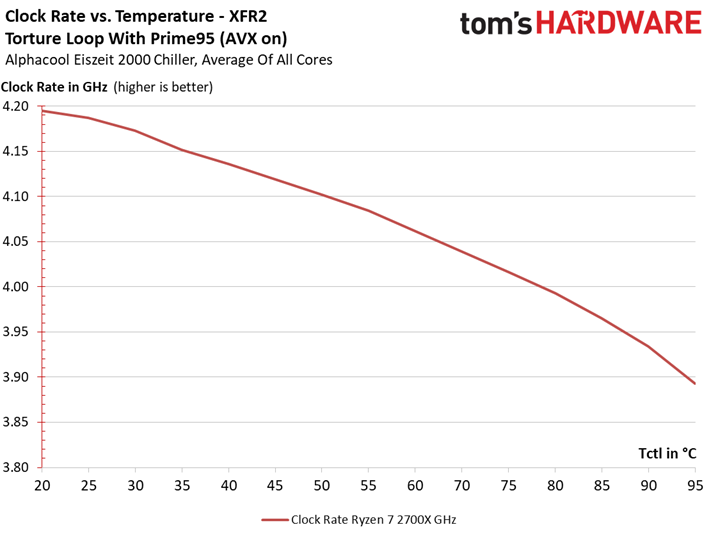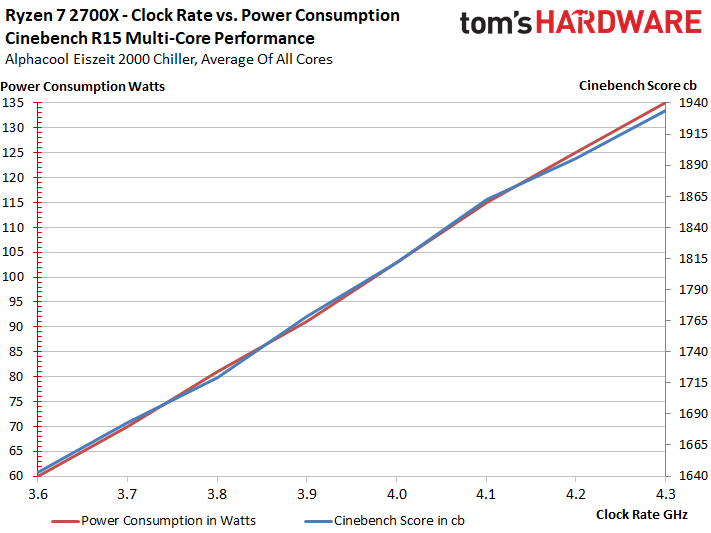AMD Ryzen 7 2700X Review: Redefining Ryzen
Why you can trust Tom's Hardware
XFR2 vs. Manual Overclocking
XFR2, Cooling, and Clock Rates
In contrast to the first-gen Ryzen models and their strange temperature curves, the tCTL (core temperature) values now correspond with what we'd expect to see. AMD does add a 10-degree offset to the 2700X specifically, which motherboard BIOSes already take into account. We subtract this offset from our own measurements.


Chip quality naturally influences achievable clock rates as well. These effects are seen much more clearly with second-gen Ryzen CPUs supporting XFR2, since they have to be binned precisely.
With as much cooling performance as we could muster, Ryzen 7 2700X still reaches almost 4.2 GHz. A more conventional thermal solution would result in a lower clock rate. However, with a good air cooler, it should be possible to sustain 4 GHz on all cores.
Manual Overclocking
Ryzen 7 2700X can be manually overclocked to 4.3 GHz. But the 1.475V required for this is more aggressive than we want to get long-term. Pushing to 4.35 GHz resulted in a crash no matter how much voltage we applied.
As the following curve shows, power consumption and performance in Cinebench are almost directly proportional, so long as the system runs stably and doesn't crash. It's also worth noting that Cool'n'Quiet is completely disabled on our test platform when we configure the ratio multiplier manually. When that happens, the configured clock rate doesn't drop from its specified maximum, even at idle.
We measure a maximum of 135W in Cinebench and just over 150W in Prime95 with AVX, although this extreme torture test is more of an exhibition.
If you spend some money on good cooling, there's no reason to manually overclock Ryzen 7 2700X. Thanks to XFR2, AMD's flagship should remain stable above 4 GHz, even under full load. Try to go any higher and you'll pay a hefty price in heat, power, and possibly long-term reliability.
Get Tom's Hardware's best news and in-depth reviews, straight to your inbox.
MORE: Best CPUs
MORE: Intel & AMD Processor Hierarchy
MORE: All CPUs Content
Current page: XFR2 vs. Manual Overclocking
Prev Page Rendering, Encoding, And Compression Next Page Power Consumption
Paul Alcorn is the Editor-in-Chief for Tom's Hardware US. He also writes news and reviews on CPUs, storage, and enterprise hardware.

